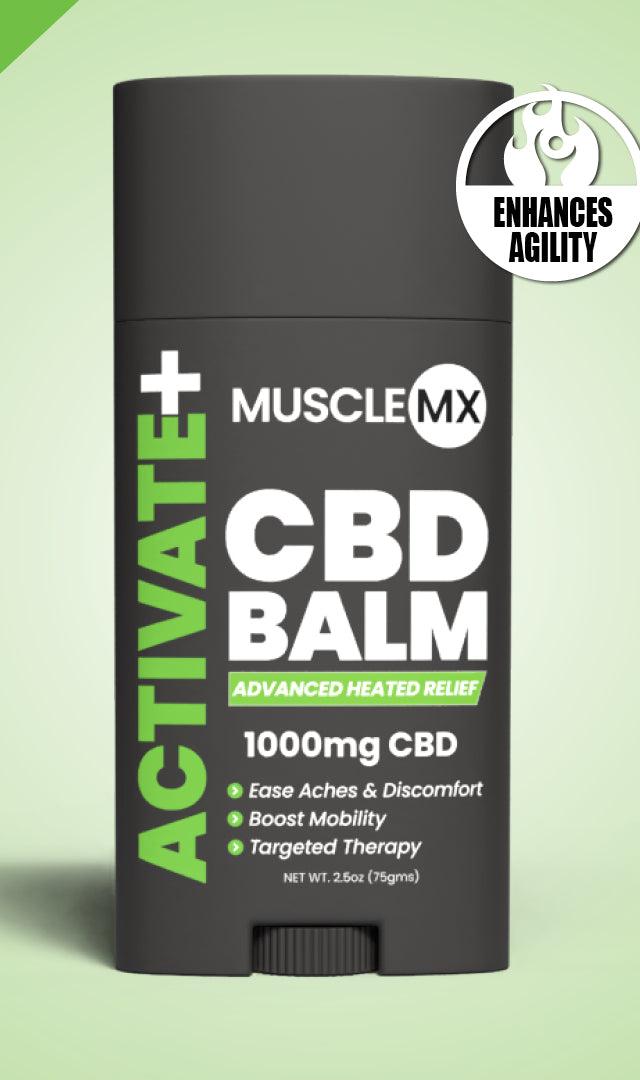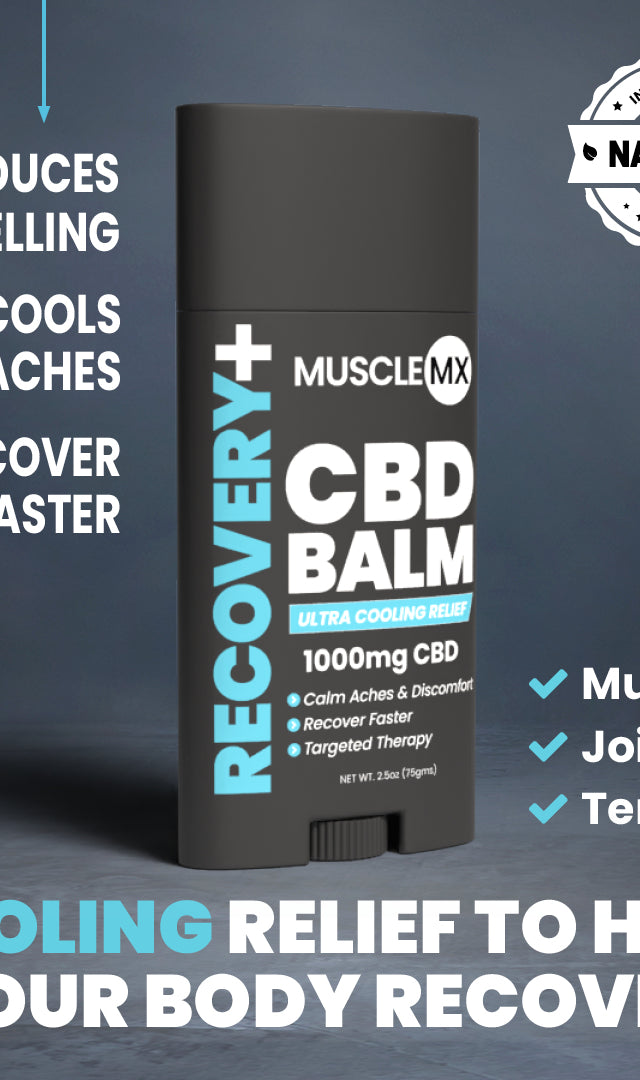7 Ways To Relieve a Sore Ankle
Ankle discomfort can arise from a number of sources, making it a common issue for many. This complex joint, where the tibia, fibula, and talus meet, bears the brunt of all of our daily movements. Unfortunately, this also makes it vulnerable to various types of injuries and conditions.
From a minor sprain to chronic conditions like arthritis, understanding the nature of ankle pain is the first step toward effective relief. Equally important is knowing the array of methods available to ease this discomfort.
This knowledge empowers us to appropriately address ankle pain, whether a temporary setback or a persistent issue. Let’s explore the common causes of sore ankles and effective ways to identify and address these issues, offering a path to comfort and mobility.
What Can Cause a Sore Ankle?
The ankle joint, a complex structure involving bones like the tibia, fibula, and talus, and supported by an intricate network of ligaments, is essential for movement but susceptible to pain.
One of the most common causes of ankle discomfort is overuse, where repetitive activities strain the ankle joint, leading to soreness and discomfort. Ankle sprains, resulting from an awkward twist or turn, damage the ligaments, causing pain and swelling.
Arthritis, in its various forms, can also play a significant role in ankle pain. Osteoarthritis, the wear-and-tear type, typically affects older individuals, leading to joint degeneration and pain.
In contrast, rheumatoid arthritis, an autoimmune disorder, targets the lining of joints, including the ankle, causing inflammation and discomfort.
Another condition, tendinopathy, involves the tendons around the ankle, leading to pain, especially with movement.
Bursitis, an inflammation of the small fluid-filled sacs (bursae) around the ankle joint, is another factor contributing to ankle pain. This condition can result from repetitive motion or direct impact, leading to swelling and discomfort in the affected area. Understanding these common causes is crucial in addressing ankle pain effectively, guiding us toward appropriate relief methods.
How To Identify Ankle Problems
Recognizing the symptoms of a sore ankle is essential for timely and effective treatment. Severe pain, especially when bearing weight, clearly indicates an issue. Swelling is another common symptom, often accompanying injuries like a sprained ankle, where the ligaments are stretched or torn, leading to discomfort and instability in the joint.
Achilles tendon issues, such as tendinitis, also contribute to ankle pain. This condition involves inflammation of the Achilles tendon, the band of tissue connecting calf muscles to the heel bone. Bursitis and arthritis, as mentioned, are other prevalent causes, each presenting with its unique set of symptoms.
A healthcare professional may conduct a thorough physical examination to diagnose these conditions. An X-ray or a musculoskeletal ultrasound may also be utilized to get a clearer picture of the internal structures of the ankle.
Remember, understanding the nature of the problem is the first step toward finding relief and regaining mobility.
7 Ways To Relieve a Sore Ankle
Trying to tolerate the discomfort of a sore ankle can be tough. However, several tried-and-true methods can help to provide relief and encourage healing. Let's explore some effective strategies that may ankle discomfort.
1. Use the RICE Method
The RICE method – Rest, Ice, Compression, Elevation – is a time-honored approach to relieving ankle pain. This method focuses on minimizing swelling and providing support to the injured area.
-
Rest: It's crucial to give your ankle a break. This means reducing activities that exacerbate the pain, allowing the soft tissues time to heal. Resting prevents further aggravation of the injury and is a key component in recovery.
-
Ice: Applying an ice pack to the sore ankle can significantly reduce swelling and provide soothing relief. Icing the affected area for 15-20 minutes every few hours during the initial days following an injury is recommended. This cold therapy helps in numbing the pain and reducing inflammation.
-
Compression: A compression wrap or an elastic bandage can provide much-needed support for a sore ankle. It helps in keeping the joint stable and reduces swelling. However, ensure the compression is snug but not too tight to avoid restricting blood flow.
-
Elevation: Elevating the ankle above the level of your heart, especially during rest, can greatly aid in reducing swelling. This position helps in draining excess fluid, thereby minimizing inflammation and discomfort.
2. Wear Supportive Footwear
Proper footwear plays an important role in ankle health. When spending extended periods on your feet, choosing shoes with adequate padding and support is essential. Supportive footwear helps in distributing your body weight evenly, reducing the strain on your ankles.
This is particularly important for individuals with flat feet or those prone to ankle injuries. Shoes with proper arch support and a cushioned sole can significantly prevent unnecessary discomfort and promote overall foot health.
3. Stay Hydrated
Did you know hydration is vital to muscle and joint health? Adequate water intake helps ensure that your body's soft tissues and joints, including your ankles, remain supple and well-lubricated.
This hydration helps in reducing the risk of injuries and aids in the recovery process. Water plays a crucial role in maintaining the elasticity and flexibility of ligaments and tendons, which can help prevent ankle injuries and speed up healing when they do occur.
4. Consider Your Diet
The food we eat directly impacts our body’s health, including our ankles. Diets rich in nutrients that support joint health, like calcium, vitamin D, and omega-3 fatty acids, can be beneficial. These nutrients contribute to stronger bones and healthier joint tissues, which can help in preventing and alleviating ankle pain.
Uric acid, a byproduct found in certain foods, can cause buildup throughout the body, contributing to joint discomfort, particularly in cases like gout. Managing uric acid levels through diet can therefore be a crucial step in maintaining ankle health.
Incorporating a balanced diet rich in fruits, vegetables, lean proteins, and whole grains can support overall musculoskeletal health, offering natural support to your ankles and the rest of your body.
5. Exercises and Physical Therapy
Physical therapy plays a fundamental role in the recovery from ankle injuries. It can help strengthen the ankle to prevent future issues. A physical therapist can guide you through exercises tailored to your specific needs, ensuring a safe and effective recovery.
Stretching exercises are essential. They help improve flexibility and can reduce stiffness in the ankle. Simple stretches, like pointing and flexing the foot, can be done anywhere. Balancing exercises, such as standing on one foot, enhance the stability of your ankle, strengthening the muscles that support the joint.
Incorporating a warm-up routine before engaging in physical activities is equally important. It prepares your ankle for the stress of exercise, reducing the risk of overuse injuries. A good warm-up increases blood flow to the muscles and improves the elasticity of the tendons and ligaments around the ankle, making them less prone to tears and sprains.
Talk with your healthcare provider about what stretches and exercises may be helpful for your particular scenario.
6. Medical Interventions
There comes a point when professional medical advice is necessary. If you experience persistent or severe ankle pain, it's time to consult a healthcare professional. They can offer a comprehensive assessment and recommend the best course of action.
Over-the-counter options, like ibuprofen, are commonly used to manage ankle pain. Non-steroidal anti-inflammatory drugs can reduce inflammation and provide relief. However, some people prefer to avoid these medications due to potential side effects.
In such cases, prescription treatments might be recommended. This can include steroids to reduce severe inflammation or orthotics to provide additional support and correct structural imbalances. Custom-made orthotics, in particular, can effectively distribute pressure evenly across the foot, thus alleviating ankle pain.
7. Use CBD
CBD, or cannabidiol, has gained attention for its ability to provide relief from feelings of discomfort and soothe tension. This natural compound works with the body's endocannabinoid system (ECS), which has cannabinoid receptors throughout the body, including in the ankle area. By interacting with these receptors, CBD can help ease feelings of discomfort.
Our Recovery CBD Balm is specially formulated to offer relief. Infused with cooling menthol, it provides an added soothing effect when applied to the sore area. The balm offers targeted, immediate relief, making it an excellent choice for those seeking a direct approach to alleviating ankle discomfort.
Additionally, CBD oils and CBD gummies can support full-body relaxation. By fostering overall relaxation and immune health, these forms of CBD can contribute to a relaxed feeling of overall wellness.
The dual approach of using topical CBD for immediate relief and ingestible CBD for overall well-being can be a comprehensive strategy for supporting your ankle. It's a gentle, natural way to support your body's healing process and maintain comfort.
When To Seek Professional Help
There are moments when ankle pain signals a need for professional intervention. Recognizing these signs is important for your health and well-being. If you suspect a broken ankle, indicated by intense pain, inability to move or bear weight on the foot, or visible deformity, immediate medical attention is necessary.
Severe ligament damage and conditions like reactive arthritis also require a professional's expertise. These issues often present with persistent pain, significant swelling, and reduced mobility.
Consulting with a physical therapist or even your primary medical professional becomes essential if you experience persistent or severe pain that doesn't improve with home care. These experts can provide a thorough evaluation and tailor a treatment plan that addresses the specific needs of your condition.
Understanding the limitations of home remedies and the value of professional advice is important. Their guidance can prevent further injury and ensure a safe and effective recovery.
Tips For Preventing Future Ankle Problems
Prevention is key to maintaining healthy ankles. Wearing proper footwear is essential, especially for those with flat feet, as it provides the necessary support and prevents undue strain on the ankles. Opt for shoes with adequate arch support and cushioning to protect your feet during prolonged periods of standing or walking.
Building strength and flexibility in the lower leg is another preventive measure. Regular exercises that target these areas can enhance the stability and resilience of your ankles. This approach is particularly beneficial in guarding against overuse injuries.
Understanding the importance of gradually building up your activity level is also important. Incremental increases in exercise intensity give your ankles time to adapt and strengthen, reducing the risk of injuries.
And CBD isn’t only beneficial when you’re experiencing discomfort. In fact, CBD works best when taken consistently over time. By adding CBD to your daily routine, its natural soothing properties can help ease feelings of stress, which can contribute to tension and injury. CBD also supports sleep and immune function, both essential for muscle recovery and healing.
The Bottom Line
Understanding and addressing ankle pain is essential for maintaining mobility and overall well-being. These strategies offer comprehensive care for your ankles, from the RICE method to physical therapy and supportive footwear to incorporating CBD into your routine.
Remember, being proactive in your ankle care and seeking professional help when needed can make a significant difference. At Muscle MX, we're committed to helping you step confidently into a life of comfort and active wellness.
We invite you to explore our range of high-quality CBD products designed to support your wellness journey and elevate your approach to ankle health.
Sources:
RICE (rest, ice, compression, and elevation) | UK Healthcare
Dehydration and Joint Pain: How Your Hydration is Affecting Joint Health | Orthopedic Associates
Gout - Symptoms and causes | Mayo Clinic.
The endocannabinoid system: Essential and mysterious | Harvard Health
Enhancing Endocannabinoid Control of Stress with Cannabidiol | PMC

















































